|
Uploaded: 10/22/2005 3:10:55 PM Categories: Drawing Schematics Variations |
Urban Form - Street Design
Urban design seminar required students to team up into large groups of six or more to design a city located in the Piedmont region of western Virginia. My group was asked to design a bounded city with a density of almost 40,000 people per square mile. The city had to be able to support approximately one million people and had to offer all the typical components of a functioning city: civic agencies, educational board strategies, parks, building archetypes, and other infrastructure. My role in the project was to take to the streets and develop a palette of urban corridors that could be used to stitch our city together. I took photographs, visited nearby urban communities, and looked at a lot of photos online. I sought to make a catalog of the elements which gave character to the street life. The entire catalog of streets is much larger than what’s presented here, but I think you’ll get an understanding of the kind of work I did for this project with the samples provided.  View:
4th yr Projects View:
4th yr Projects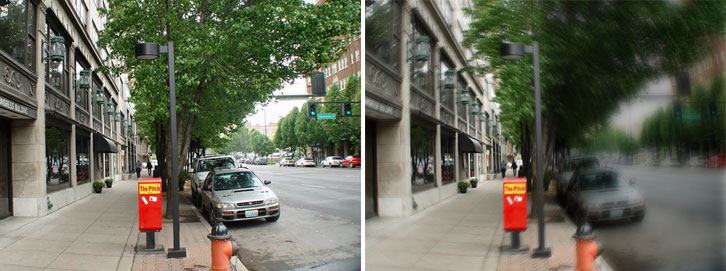
A wide street is made absent from the sidewalk activity by planting thick, low branching trees and limiting the street lights. 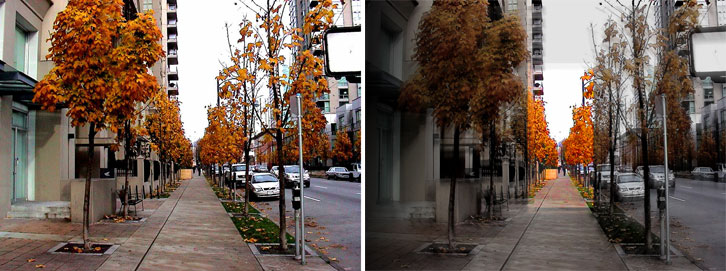
Where community relationships needs strengthening, the sidewalk is articulated by low ball shaped trees that allow views across the street. 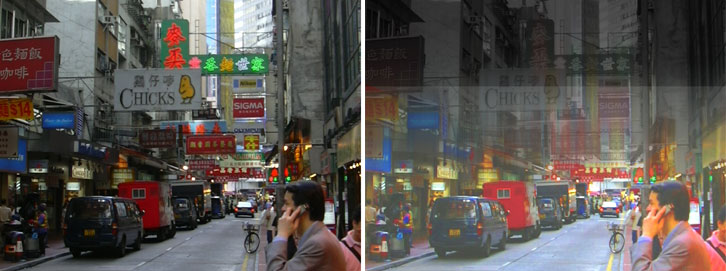
Seemingly every piece of skyline is blocked by advertising to inhibit the street walker from being able to casually stroll by a shop owner’s store. 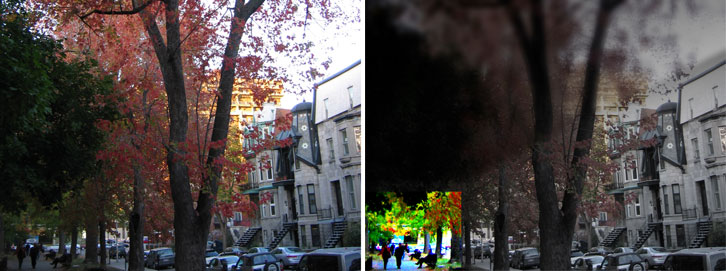
A sidewalk is more pleasurable for an evening stroll, allowing homes across the street deeper views out large windows that let in more sunlight. 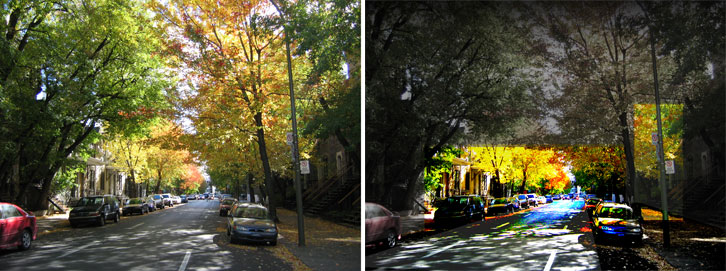
Where backyards don’t exist, uniquely growing deciduous trees lining the street help provide identity to the flat owner’s stoop and parking space. 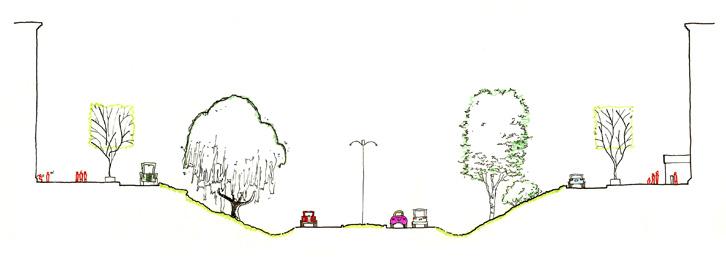
A major highway runs through the middle of a dense area of town without bombarding the refined street life taking place outside these ivory towers. 
Topography offers an opportunity to separate the experience of automobile ride through the city and a walk along the lakeside. 
In business districts the sidewalk is sometimes wider than the street in order to accommodate the amount of foot traffic happening in rush hour. 
The wide boulevard works best for commercial offices that do not receive a heavy amount of walk-in visitors. 
Stooped building-forms combined with heavy infrastructure can dominate a streetscape diminishing the identity of the surrounding buildings. |
 Previous Entry
Previous Entry Chalasani House
Chalasani House